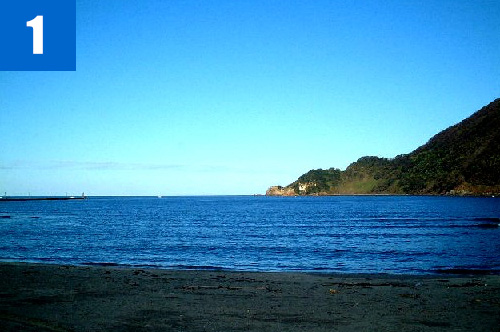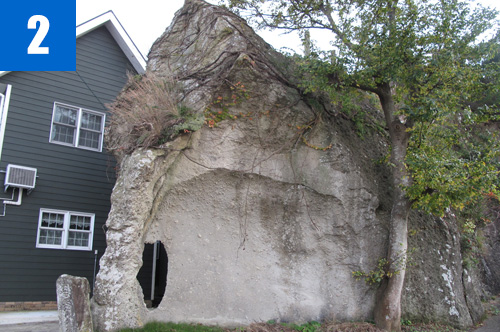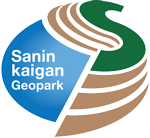Located in the mouth of the Maruyama River, Kehi is a site showing evidence of ancient trading with the Continent from the relics of unearthed Doutaku (copper bell). Notched rocks showing the traces of marine transgression in the Jomon Period and the marvelous rocks of Elephant Rock and Ebisu Rock are located near the area, which are loved by local citizens. The Tai district, where the Tai Marsh is partly registered as a Ramsar Convention marshland, is known as a model place where local people acted to decrease disaster damages when North Tajima Earthquake ocurred in 1925.
(1)Keinohama Beach
A sand beach in the mouth of the Maruyama River. Upland farming is conducted on the beach bank. As shown by the name Kehi, the place shows influence from the Korean Peninsula and people have been lived since ancient times. Tumulus in Tai and the Doutaku unearthed site are historical sites designated by the city. Designated as a cultural property also.
(2)Elephant Rock and Ebisu Rock
Notched rocks above sea level, showing that the sea level in the Jomon Period was higher than now. Elephant Rock is a rock shaped like an elephant. Since green tuff is easily eroded, the rock has become the current shape by erosion.
(3)Tai Fault and earthquake memorial monument
The epicenter fault of North Tajima Earthquake in 1925 is located here, where the earthquake memorial monument was built. In the earthquake, many human lives were eventually saved by prioritizing fire extinguish over lifesaving.
Tai Wakame Festival
Shabu-shabu of fresh Wakame (sea weed) and free tasting of raw Wakame are served.




